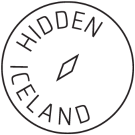
Company type:Inbound Tour Operator
Company location:Iceland
Lemax brought us great value. Our revenue is probably close to double since we started using Lemax. Of course, that is not all directly attributed to Lemax – there was a great surge of reservations coming our way after COVID, and that growth was expected. But Lemax certainly enabled our team to work on multiple bookings at the same time, which was a struggle beforehand, and thus boosted that growth.

Challenge: fragmented workflows and operational challenges threatened scaling
Before implementing Lemax, Hidden Iceland faced a number of operational challenges that significantly hindered their efficiency and scalability. Their workflow was fragmented, which led to duplicated effort and frequent human error. As demand surged post-COVID, this setup couldn’t scale – they had to keep hiring to manage the workload, which was unsustainable given Iceland’s high labor costs. Pricing inaccuracies were common due to reliance on outdated contract rates, and errors like incorrect booking dates often led to revenue loss through hotel no-shows and double payments.
Moreover, the lack of real-time pricing and availability data made it difficult to respond quickly to client requests, particularly as the local market shifted to dynamic hotel rates via Travia. These issues, combined with the absence of an integrated system to connect quoting, CRM, invoicing, and operational planning, created mounting inefficiencies and missed opportunities for growth.
Solution: a platform that centralized the data and streamlined the whole process, resulting in error reduction and revenue growth
Lemax helped the team greatly, especially on the post-confirmation steps of the booking. It allows their travel experts to work on multiple bookings at once. Before, they would struggle to work on two or three clients at once. If they all converted at the same time, the agents wouldn’t be able to take on another inquiry for quite some time because of the amount of time they would spend creating the itinerary, the guide’s documentation, getting it all ready on back-end, making the bookings, recording that information manually into sheets and so on.
With Lemax,proposals are now sent as polished PDFs that include imagery, detailed inclusions, and structured formatting – all generated automatically from the system.
The whole post-sale steps are now far more streamlined, making the overall process more efficient and reducing the chance for mistakes.
Impact: the ability to handle more inquiries, reduced margin for error, and streamlined post-sales process
One major focus was streamlining client documentation by pulling as much information as possible directly from the reservation file. This was a significant time-saver compared to the previous process, where they had to build client documents in WordPress manually.
Another key improvement was accurate, live pricing, and reducing data duplication. Previously, client, guide, and backend pricing information were all stored in separate places. Centralizing that data and allowing different parts of the system to sync meant they only needed to update information once, which not only saved time but also reduced the risk of errors during data entry or transfer.
There were also pricing errors. With Lemax, pricing is rule-based. Once the contract is set up correctly in the system, it automatically pulls the correct price based on the travel dates, eliminating manual errors and ensuring consistency.